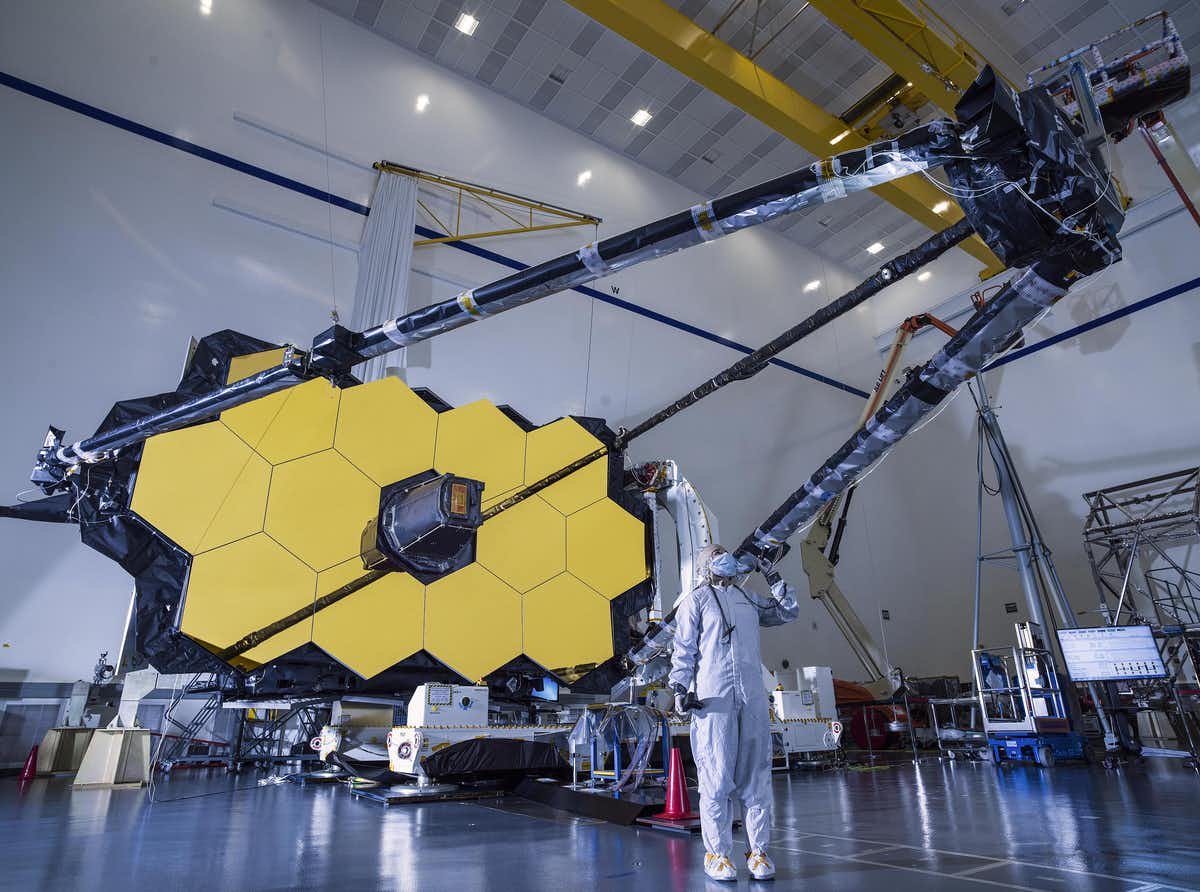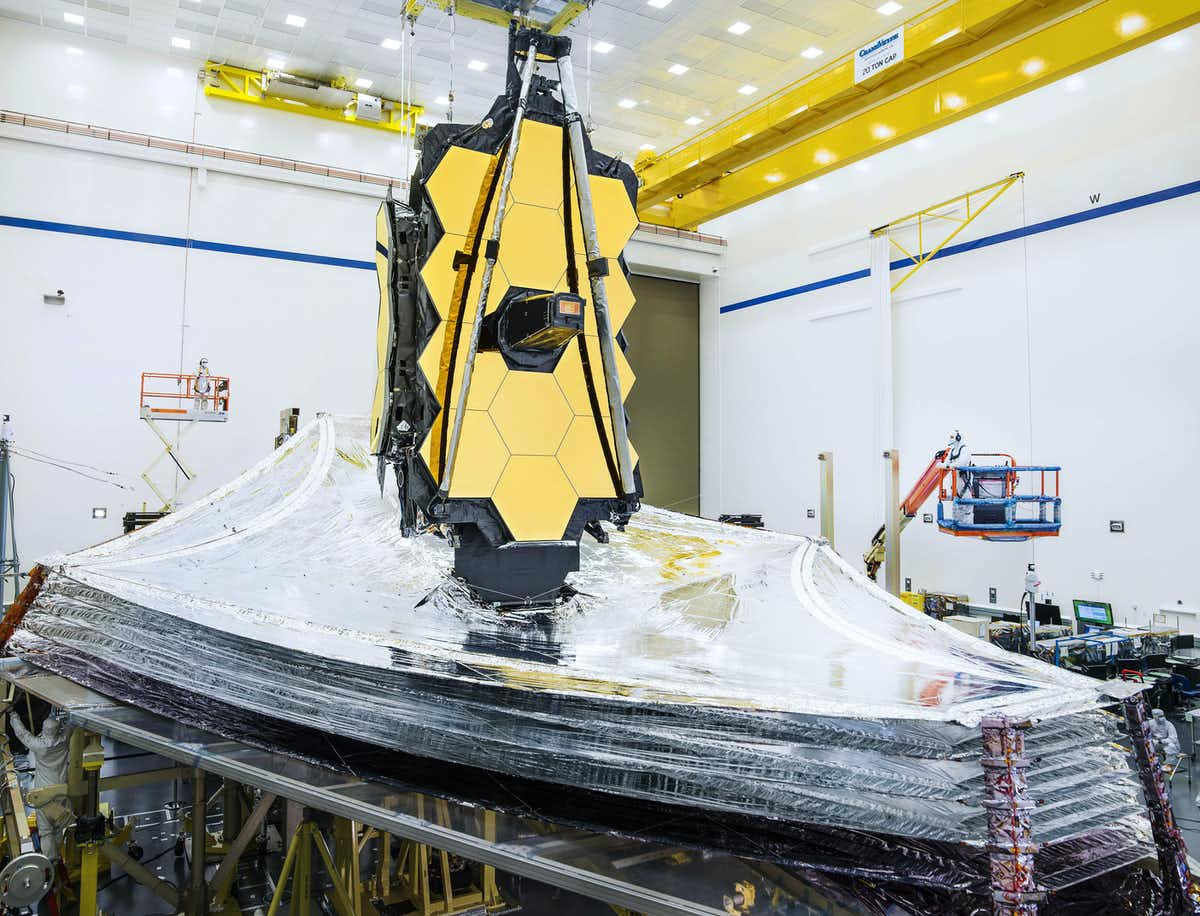James Webb, an astronomer on the telescope team, explains how a huge telescope is launched into space - and why, but first of all, that it will be successfully launched and deployed in the weeks after the launch
By: Marcia Rica Professor of Astronomy, University of Arizona, Principal Scientist of the NIRCam facility aboard the James Webb Space Telescope

The James Webb Space Telescope is scheduled to launch into space on Saturday, December 25, 2021. With it, astronomers hope to find the first galaxies to form in the universe, search for Earth-like atmospheres around other planets and achieve many other scientific goals.
I am an astronomer and the principal investigator in charge of the Near Infrared Camera - or NIRCam for short - on board the Webb Telescope. I participated in the development and testing of my camera and the telescope as a whole.
To see deep into the universe, a telescope has a very large mirror and needs to be kept very cold. But putting fragile equipment like this into space is not an easy task. There were many challenges my colleagues and I had to overcome to design, test and soon launch and align the most powerful space telescope ever built.
Young galaxies and alien atmospheres
The Webb telescope has a mirror with a diameter of 6.5 meters, a shading system from the sun the size of a tennis court and four separate camera and sensor systems for data collection.
In general, the antenna works like a satellite dish. Light from a star or galaxy will enter the telescope lens and bounce off the main mirror towards the four sensors: NIRCam, which takes pictures in the near infrared; A near infrared spectrograph, which can split the light from a selection of sources into their primary colors and measures its intensity. Another device will examine the image in the mid-infrared light and finally the Near Infrared Imaging Slitless Spectrograph, which splits and measures the light of each object that scientists aim the mirror at.
This design will allow scientists to study how stars form in the Milky Way and the atmospheres of planets outside the solar system. It may even be possible to study the composition of these atmospheres.
The NIRCam, seen here, will measure infrared light from extremely old and distant galaxies. NASA/Chris Gunn, CC BY
Ever since Edwin Hubble proved that distant galaxies resemble the Milky Way, astronomers have asked: How old are the oldest galaxies? How were they first created and how have they changed over time? The Webb Telescope was originally called "the first light machine" because it was designed to answer exactly these questions.
One of the main goals of the telescope is to study distant galaxies located at the edge of the visible universe. It takes billions of years for the light from these galaxies to cross the universe and reach Earth. I estimate that images my colleagues and I will collect using NIRCam could show protogalaxies formed only 300 million years after the Big Bang - when they were only 2% of their current age.
Discovering the first clusters of stars formed after the Big Bang is a daunting task for a simple reason: these protogalaxies are very far away and therefore appear to be very faint.
Webb's mirror is made of 18 separate segments and can collect more than six times as much light as the Hubble Space Telescope's mirror. Because distant objects appear very small, the telescope must be able to focus the light as tightly as possible.
The telescope also has to deal with another complication: because the universe is expanding, the galaxies that scientists will study with the Webb telescope are moving away from Earth, and the Doppler effect comes into play. Just as the pitch of an ambulance's siren decreases and it becomes lower when it passes and starts moving away, the wavelength of the light from distant galaxies undergoes a large shift to a lower frequency - from visible light to infrared.

Web detects infrared light which means it is basically a giant heat detector. To "see" faint galaxies in infrared light, the telescope has to be extremely cold, otherwise all it will see will be the infrared radiation it emits. This is where the heat shield comes in, the shield is made of thin aluminum coated plastic. It is only five atomic layers thick and measures 17.2 meters by 21.2 meters. It is designed to keep the mirror and sensors at a temperature of minus 234° Celsius.
The Webb Telescope is an amazing feat of engineering, but how can you safely launch such a device into space and ensure that it works?
Engineers and scientists tested the entire telescope in an ultra-cold, low-pressure cryogenic vacuum chamber. NASA/Chris Gunn, CC BY
Plenty of tests
The James Webb Space Telescope will orbit the Earth at a distance of 1.5 million km, about 4,500 times farther from the International Space Station and far too far for astronauts to maintain it as is done with the Hubble Space Telescope.
Over the past 12 years, the team has tested the telescope and instruments, shaking them to simulate the rocket launch and testing them again. Everything is cooled and tested under the extreme operating conditions it will encounter on the track. I'll never forget when my team was in Houston testing the NIRCam using a chamber designed for the Apollo lunar rover. It was the first time my camera detected light bouncing off the mirror of the telescope, and we couldn't be happier - even though Hurricane Harvey was fighting us outside.
After the tests came the rehearsals. The telescope will be controlled remotely by commands sent over a radio link. But because the telescope will be so far away - it takes the signal six seconds to travel in one direction - there is no real-time control. So for the past three years my team and I have been going to the Space Telescope Science Institute in Baltimore and running repeated missions in a simulator covering everything from launch to routine science operations. The team even practiced dealing with potential problems that the test organizers throw at us and call "abnormalities".
To fit inside a rocket, the telescope needs to be folded into a compact package. NASA/Chris Gunn, CC BY
Some alignment is required
The Webb team will continue to train until the launch date in December, but our work is far from over after Webb was folded up and put atop the rocket.
We have to wait 35 days after launch for the parts to cool before starting the alignment. Once the mirror is opened, NIRCam will take high-resolution image sequences of the individual mirror segments. The telescope team will analyze the images and tell the engines to adjust the segments in steps measured in billionths of a meter. Once the motors move the mirrors into position, we will confirm that the telescope alignment is perfect. Because this task is so critical there are two identical copies of NIRCam on board – if one fails, the other can take over the alignment job.
The alignment process should take six months. When finished, Web will start collecting data. After 25 years of work, finally.
WEB is an international program led by NASA with its partners, ESA (European Space Agency) and the Canadian Space Agency. The European Space Agency is responsible for the launch.
More of the topic in Hayadan:
